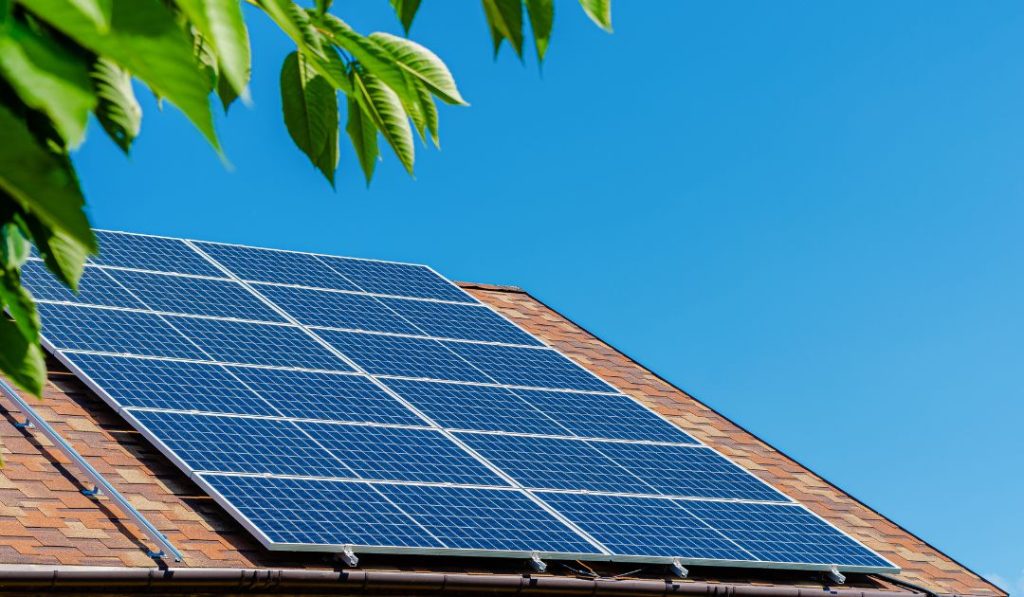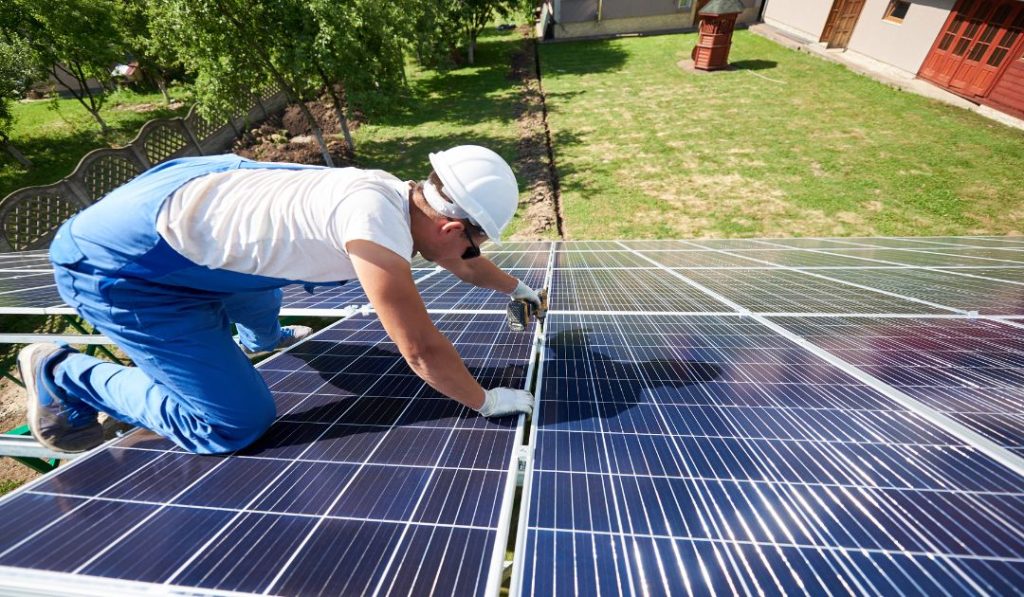Published on: October 04, 2022

If you are planning to install solar panels to produce a renewable energy source for your home, you want to ensure you do so effectively to protect your home’s roof and harvest as much sunlight as possible.
Rooftop solar panels are the most popular in comparison to other well-known locations, such as in your yard. That’s because when solar panels are down low, they are more susceptible to disruptions from pets and young children. Additionally, the lower to the ground the panels are, the more chance there is of something falling on the solar panels and damaging them.
When it comes to the area you need to put your panel installation on, you need to guarantee it is an area that has a lot of sun available to it, or you will experience issues with power generation. That is another reason individuals regularly pick the top of their home or business for installation.
To ensure you get everything right to generate the most power from your investment in solar panels, read up on how to mount the panels properly for the best results.

Before you get started with mounting solar panels, you should review the health of your roof. This is important because if you later decide to get a new roof, it will cost more because it will require that you remove the solar panels before your roofing project, which means paying your solar panel company for the removal and reinstallation.
If your roof is 15-25 years old, it’s probably best to pre-emptively replace it before working with the solar panel company. The first step is to get a roofing contractor to review your roof and its status. Contractors know what to look for to estimate how much life a roof has left in it. Of course, a bad storm or falling object, such as a large tree branch, could change that timeline instantly. But you’ll at least have an estimate of what to expect from your roof.
Once a contractor has given you an estimate on your roof’s timeline, you can move forward with the eco-friendly move of installing solar panels to begin generating your own energy.
When mounting your rooftop solar panels, you should consider whether they will lay flush with your roof or if they need to tilt to receive the greatest amount of sunlight and therefore generate the most energy possible.
Here’s a step-by-step look at how to mount rooftop solar panels. However, for most homeowners, this is not a do-it-yourself project. This article is designed to give you an understanding of what to expect when working with a team of solar panel experts.
You can find mounts in three different types: pole mounts, roof-ground mounts and flush mounts. You’ll likely be using roof mounts for your project. Building a firm base will ensure your panels are installed securely. You don’t want them to come off your roof under any conditions.
Washington-area homes benefit the most from solar panels facing south because that’s the location of the greatest amount of sunlight in a day. Otherwise, east or west will do if you can’t make them face south.
Your base should be slightly tilted between 18 and 36 degrees. Companies that install solar panels use solar trackers to ensure the greatest panel efficiency.
Once your mounting structure is in place, you’re ready to mount the panels. You’ll just need some nuts and bolts to do this. Just be sure that everything is sturdy as you install each panel to prevent hazards and potentially losing one of your panels, which could be quite costly.
This is where things get a bit trickier and where it is best to have an expert on your roof ensuring the wiring is all correct. You’ll use Universal Connectors to do the wiring for rooftop solar panels. You’ll connect your solar panels using one of the following methods.
Connect your solar panels to the solar inverter. You’ll do this by connecting the positive wire from the solar panel to the positive terminal on the inverter and then connecting the negative wire from the panel to the negative terminal on the inverter.
Once you’ve connected the panels to the inverter, you’ll connect the inverter to the solar battery. This produces electricity. You’ll need a battery to use an off-grid solar system that uses stored electricity for backup.
Finally, you’ll need to connect the inverter to the grid. Generally, to do this you use a normal plug to connect to the main power switchboard. This involves connecting an output wire to the eclectic board. The electric board is what supplies electricity to your home.

The key to a very productive solar power system is the effectiveness of its installation. Along these lines, it is a good decision to look for experts to help with installing solar panels for your home.
They are prepared for this kind of installation, which should give you peace of mind that they will be dependable for protecting your home while making it more sustainable.
Installation cost is generally the top concern for homeowners when it comes to considering solar panel installation. Read up on incentives in your area to see if you might qualify for free installation or tax incentives when considering the total cost of the project.
And, every penny you pay for the expert installers is all justified, despite all the trouble as a result of the assurance of proficient and dependable installation. Furthermore, proficient installers can enable you to get started faster, which means relying on renewable energy to power your home much sooner than you would if you had to do it all yourself.
If you’re considering installing rooftop solar panels, you should first invite 2FL Windows, Siding and Roofing to review the health of your roof and recommend the best next steps to avoid added expenses with roof repair or replacement later. Schedule your free consultation now where we’ll come out and assess your roof.
Before deciding that rooftop solar panels are a good idea for you, review these top questions and answers related to this incredible renewable energy source.
Rooftop solar panels might be worth it if you live in certain areas with frequent sun and can generate enough energy while using little space on your roof. Roofs with slopes of 30 to 45 degrees also work best.
The two main disadvantages to solar energy are that they have an enormous initial cost investment that you’ll need to recoup over many decades and they are weather-dependent, meaning that a series of cloudy days could disrupt your power generation.
Further Reading:

Read the latest articles about roofing.






